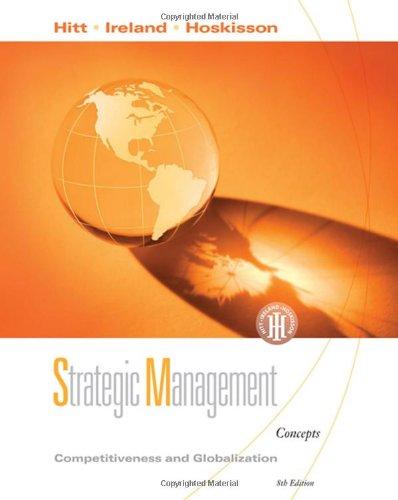Question
Rob and Chanel are both professionals who work with large corporate firms. Rob is a mid-level manager at Technology Inc.; a company that specializes in
Rob and Chanel are both professionals who work with large corporate firms. Rob is a mid-level manager at Technology Inc.; a company that specializes in designing web content for small to medium-sized business. Chanel, who works at Honda, is an area manager responsible for corporate sales in Manitoba, Canada. They each make $85,000 and $110,000 respectively and will not be receiving an increase to their salaries this upcoming year. The couple have excellent savings, no debt and an extensive emergency fund to draw on if required. It has also been confirmed that Chanel will be receiving a large inheritance cheque from her late grandfathers’ estate by the end of the year.
They have one daughter, Leah, who was born May 2014. Later that same year, they had opened a Registered Education Savings Plan (RESP) and decided to make lump sum contributions of $1,800 annually into the plan on a recurring basis each year for the next 18 years. The contribution will be made on December 31st of each year. They also calculated Leah’s education costs to be $47,500 (today’s dollars) when she turns 18. Their investor profile is aggressive growth and they project a 12% rate of return on the RESP.
In early 2019, Chanel realized there were some limitations with what Leah was able to learn and understand. Several months later after numerous testing with a specialist, Leah had been diagnosed with an intellectual disability that affected her cognitive skills making it difficult for her to think, talk and walk. The couple agreed that it was important to have someone be home at all times or at least until they were able to determine the extent the disability was going to impact Leah. That would require one of them to step down from their role completely. Later that same year, the specialist confirmed that this would likely be a prolonged disability which was to progressively get worse.
Rob had spoken with their Financial Planner who had suggested that the couple consider a Registered Disability Savings Plan (RDSP) given the diagnosis. It sounded like a good recommendation, considering the lucrative grants that are available with such plans. Given the grim diagnosis however, it is not anticipated Leah will be able to pursue post - secondary education in the future. Rob and Chanel agreed to become joint holders and would commit to contributing $3,300 at the end of this year to the RDSP while suspending any payments to the RESP indefinitely. They have an appointment booked with their Financial Planner to complete the necessary paper work.
Today is January 1, 2021.
QUESTIONS:
1. Calculate the annual CESG made into the RESP plan.
2. Calculate the value of the RESP today.
3. Given the facts of the case, who would you recommend stays home with Leah and forgo their income; Rob or Chanel? Support you answer.
4.Calculate the CDSG for 2021 on the RDSP contributions assuming Chanel stays home to take care of Leah.
5. The couple decides that Rob should stay home with Leah and that they will cancel participation in the RESP. They want to take advantage of the Accumulated Income Payment (AIP) rollover option available to them. The AIP is 40% of the plans current market value. Calculate what the RDSP will be worth in 10 years assuming an 8% rate of return and that the scheduled payments into the plan do not change. (Ignore inflation)
Step by Step Solution
3.43 Rating (166 Votes )
There are 3 Steps involved in it
Step: 1
1 Calculate the annual CESG made into the RESP plan The Canada Education Savings Grant CESG is calcu...
Get Instant Access to Expert-Tailored Solutions
See step-by-step solutions with expert insights and AI powered tools for academic success
Step: 2

Step: 3

Ace Your Homework with AI
Get the answers you need in no time with our AI-driven, step-by-step assistance
Get Started


